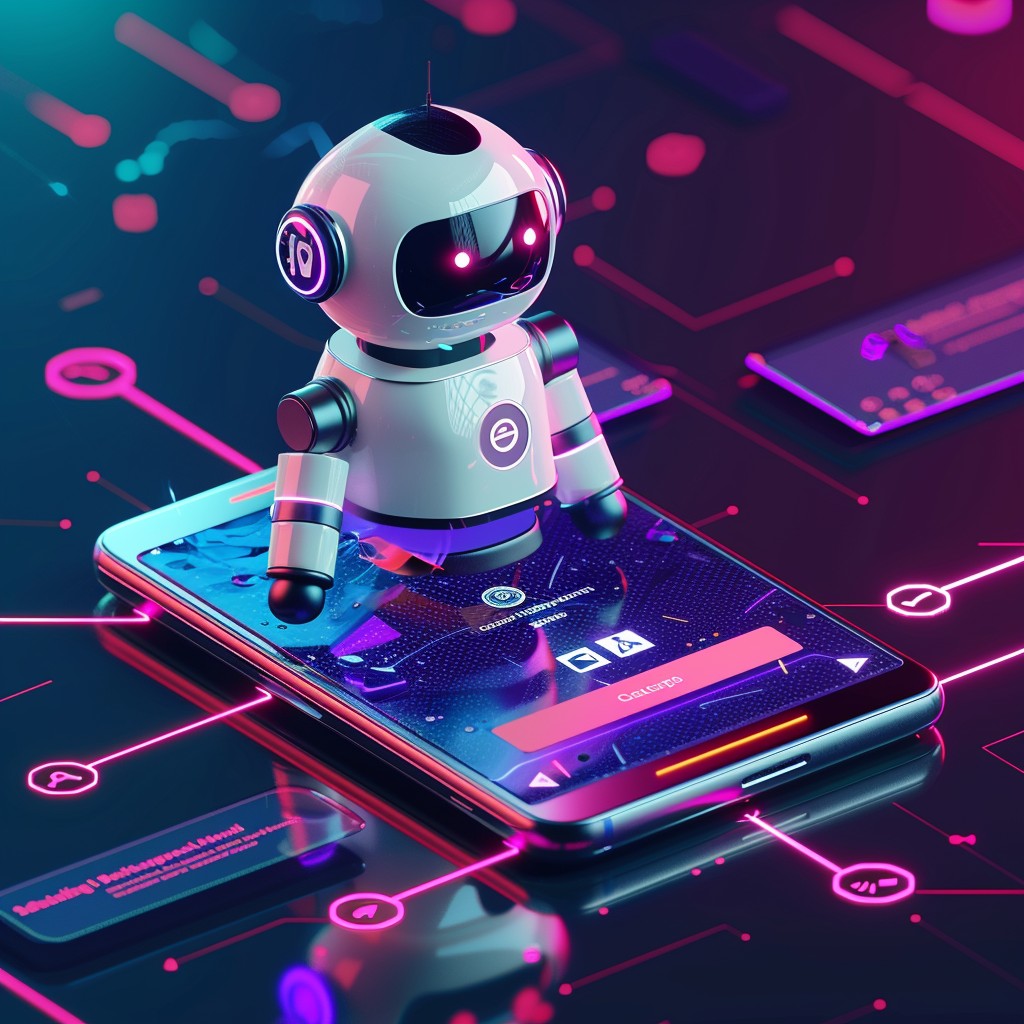
The digital revolution has drastically changed how businesses interact with customers. A crucial innovation that’s taken customer service and engagement to new heights is the chatbot, especially those powered by artificial intelligence (AI). From their humble beginnings as basic FAQ bots to today’s sophisticated, context-aware conversational agents, chatbots are enhancing how companies engage with customers, automate tasks, and provide real-time support.
This blog will delve into the evolution of chatbots, their role in improving customer engagement, and how businesses can leverage AI-driven bots for enhanced customer experiences.
The Early Days: Rule-Based Chatbots
The first iteration of chatbots was rule-based, functioning on simple algorithms and predetermined scripts. A well-known example of early chatbot technology is ELIZA, created in the 1960s. ELIZA mimicked human conversations using pattern-matching techniques but had no true understanding of language.
While groundbreaking for its time, rule-based chatbots were limited. They could only respond to specific, pre-programmed inputs, making them inflexible in handling complex queries. Despite their limitations, these early bots laid the groundwork for today’s AI-powered solutions.
Use Case: Businesses initially adopted rule-based chatbots for FAQs. Customers could get quick answers to standard questions, reducing the need for human interaction for simple queries.
The Rise of AI-Driven Chatbots
As AI technology advanced, so did the capabilities of chatbots. The introduction of natural language processing (NLP) and machine learning (ML) allowed chatbots to move beyond pre-defined scripts, enabling them to understand user intent, learn from past interactions, and provide more personalized responses.
Key Innovations in AI Chatbots
- Natural Language Processing (NLP):
NLP enables chatbots to interpret and understand human language, even with variations in tone, slang, and sentence structure. This makes AI chatbots more conversational and allows them to handle more complex queries. - Machine Learning (ML):
Machine learning allows chatbots to improve over time. By analyzing user interactions, chatbots can “learn” and adapt, refining their responses and enhancing accuracy in future engagements. - Contextual Awareness:
Unlike their rule-based predecessors, AI chatbots can hold contextual conversations. They remember past interactions and use that information to provide continuity, making the conversation feel more natural. - Integration with Other Technologies:
AI chatbots are now integrated with other technologies like speech recognition, voice assistants (e.g., Alexa, Google Assistant), and customer relationship management (CRM) tools. These integrations allow businesses to provide more seamless and personalized customer experiences across multiple platforms.
Use Case: Major e-commerce platforms and service providers have adopted AI-driven chatbots to manage customer service queries, product recommendations, and even booking systems. For example, Domino’s Pizza uses AI chatbots to take orders and track deliveries, offering a seamless, efficient user experience.
The Role of Chatbots in Enhancing Customer Engagement
Chatbots are transforming customer engagement by enabling 24/7 interaction, providing real-time responses, and delivering personalized experiences. Here’s how AI-powered chatbots are enhancing customer engagement across industries:
1. Instant Customer Support
One of the biggest advantages of AI chatbots is their ability to provide instant, 24/7 customer support. Traditional customer service teams often struggle with limited hours and high volumes of inquiries, leading to long wait times. AI chatbots, however, are always available, handling multiple conversations simultaneously and resolving simple queries immediately.
Example: Companies like Sephora use chatbots to assist customers with beauty product recommendations, while banks like Capital One have bots that help users manage their accounts, check balances, and make payments.
2. Personalized Interactions
AI-driven chatbots are designed to offer personalized experiences by understanding user behavior and preferences. They can track past interactions and recommend products or services that align with the customer’s interests. This level of personalization makes customers feel more valued and increases engagement.
Example: Spotify’s Facebook Messenger bot recommends music based on user preferences, creating a highly personalized listening experience and encouraging more interaction with the platform.
3. Sales and Marketing Automation
Chatbots have revolutionized how businesses approach sales and marketing. AI chatbots can now generate leads, qualify prospects, and even help convert them into customers. By automating tasks like responding to inquiries, providing product information, or offering personalized discounts, chatbots enable sales teams to focus on high-value tasks.
Example: H&M’s chatbot helps customers find clothing items by asking a series of questions about their preferences. This not only assists the customer in making decisions but also increases the likelihood of a sale by guiding them through the process.
4. Handling Complex Queries
Thanks to advancements in AI, chatbots are now equipped to handle more complex customer queries that previously required human intervention. This is achieved through their ability to interpret context, analyze large amounts of data, and provide logical, tailored responses.
Example: American Express utilizes AI chatbots to handle complex financial queries, including transaction history analysis and fraud detection, offering customers peace of mind and timely assistance.
5. Omnichannel Engagement
AI chatbots can engage with customers across multiple platforms—whether through a company’s website, social media, or messaging apps. This omnichannel engagement ensures that customers can access support or information wherever they are, further enhancing the customer experience.
Example: Starbucks leverages a chatbot on both its app and Facebook Messenger, allowing customers to place orders, customize their drinks, and get updates on their orders regardless of the platform they use.
The Future of AI Chatbots: Emerging Trends
As AI technology continues to evolve, chatbots are expected to become even more sophisticated. Here are a few emerging trends:
1. Emotionally Intelligent Chatbots
Future chatbots will likely be able to detect and respond to human emotions, further enhancing the customer experience. These emotionally intelligent chatbots will adjust their tone, responses, and suggestions based on the user’s emotional state, making conversations even more natural and empathetic.
2. Voice-Powered Chatbots
The rise of voice assistants like Alexa and Google Assistant points to the growing role of voice technology in customer engagement. Voice-powered chatbots will become more common, offering users the convenience of hands-free interaction.
3. Chatbots as Virtual Assistants
Chatbots will increasingly serve as full-fledged virtual assistants, capable of handling a wide range of tasks, from booking flights and managing schedules to ordering groceries. These assistants will integrate even more deeply with personal data, offering hyper-personalized services.
4. AI Chatbots in Healthcare
The healthcare industry is already seeing the benefits of AI chatbots for patient engagement, appointment scheduling, and even symptom checking. As these bots become more advanced, they will play a larger role in assisting doctors and improving patient care.
How to Implement Chatbots Effectively
To maximize the benefits of AI chatbots, businesses need to follow a few best practices:
- Define the Purpose: Ensure that your chatbot serves a specific purpose, whether it’s for customer support, lead generation, or marketing.
- Leverage Data: Use data from customer interactions to continually improve chatbot performance.
- Integrate Across Channels: Ensure your chatbot can operate seamlessly across multiple platforms, including social media, websites, and apps.
- Maintain Human Oversight: While AI chatbots are highly advanced, human intervention is still necessary for handling particularly complex queries or sensitive issues.
Conclusion: Revolutionize Customer Engagement with Brina Solutions
The evolution of chatbots has brought about a new era of customer engagement, enabling businesses to offer real-time, personalized experiences at scale. As chatbots continue to evolve with advancements in AI, companies that adopt these technologies will be better positioned to meet customer expectations, drive sales, and enhance overall satisfaction.
At Brina Solutions, we help businesses leverage AI-powered chatbots to revolutionize customer engagement and automate workflows. Our tailored chatbot solutions can help you deliver a seamless customer experience across all digital touchpoints. Ready to take your customer engagement to the next level? Contact us today to learn more about how we can help you implement cutting-edge chatbot technology for your business.







Leave a Reply